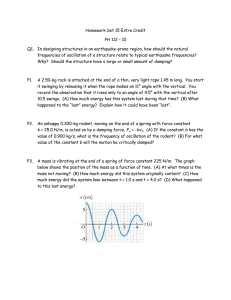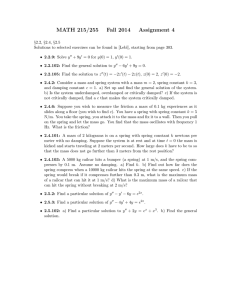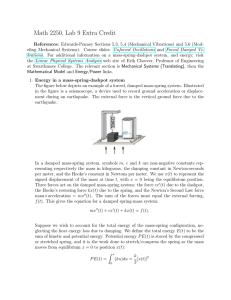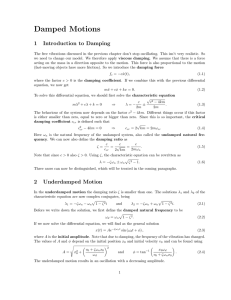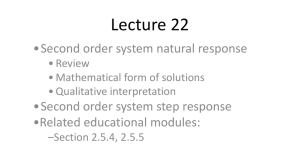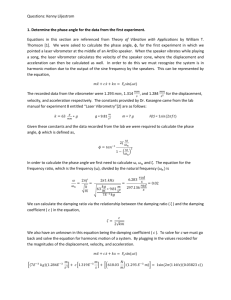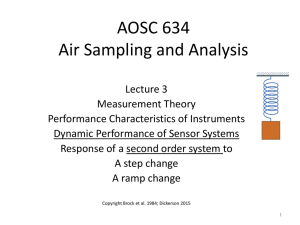Physics 111 HW29 - University of St. Thomas
advertisement
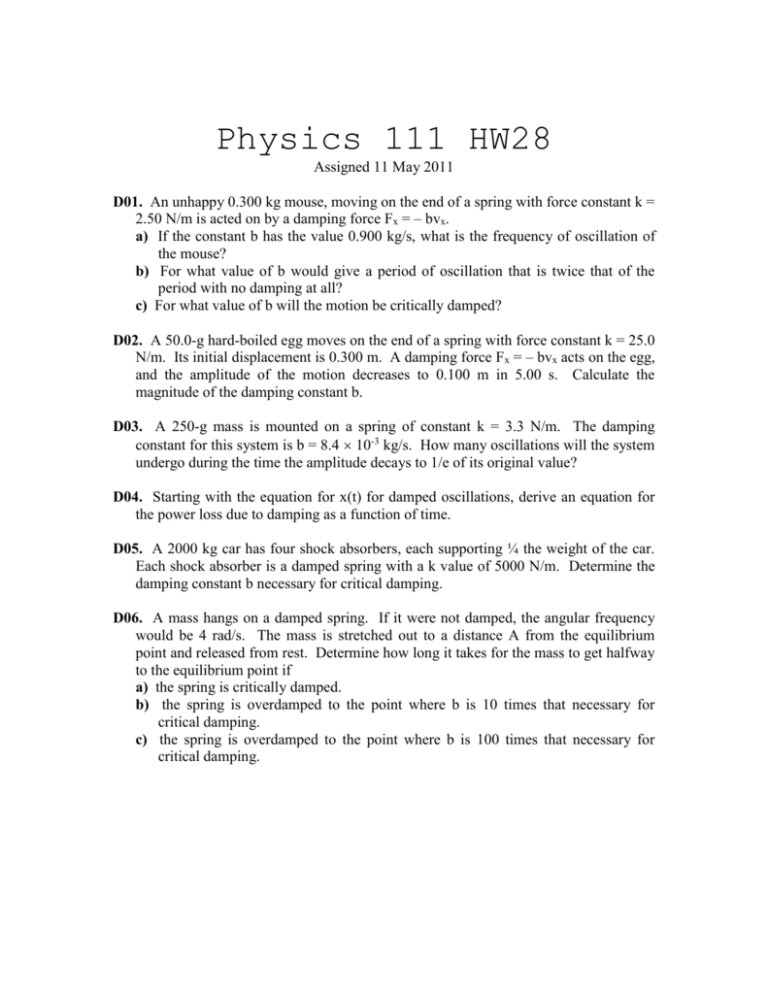
Physics 111 HW28 Assigned 11 May 2011 D01. An unhappy 0.300 kg mouse, moving on the end of a spring with force constant k = 2.50 N/m is acted on by a damping force Fx = – bvx. a) If the constant b has the value 0.900 kg/s, what is the frequency of oscillation of the mouse? b) For what value of b would give a period of oscillation that is twice that of the period with no damping at all? c) For what value of b will the motion be critically damped? D02. A 50.0-g hard-boiled egg moves on the end of a spring with force constant k = 25.0 N/m. Its initial displacement is 0.300 m. A damping force Fx = – bvx acts on the egg, and the amplitude of the motion decreases to 0.100 m in 5.00 s. Calculate the magnitude of the damping constant b. D03. A 250-g mass is mounted on a spring of constant k = 3.3 N/m. The damping constant for this system is b = 8.4 10-3 kg/s. How many oscillations will the system undergo during the time the amplitude decays to 1/e of its original value? D04. Starting with the equation for x(t) for damped oscillations, derive an equation for the power loss due to damping as a function of time. D05. A 2000 kg car has four shock absorbers, each supporting ¼ the weight of the car. Each shock absorber is a damped spring with a k value of 5000 N/m. Determine the damping constant b necessary for critical damping. D06. A mass hangs on a damped spring. If it were not damped, the angular frequency would be 4 rad/s. The mass is stretched out to a distance A from the equilibrium point and released from rest. Determine how long it takes for the mass to get halfway to the equilibrium point if a) the spring is critically damped. b) the spring is overdamped to the point where b is 10 times that necessary for critical damping. c) the spring is overdamped to the point where b is 100 times that necessary for critical damping.

